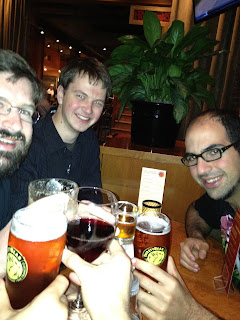NoSQL and Big Data Vlab event at Stanford
The Vlab at Stanford put together another great event on NoSQL and Big Data.
Here is the description from their web-site.
Event Description
0 to 50 million users in 50 days? Disruptive scaling is painless with NoSQL.
Even enterprises have taken
notice. They are using the same technology that propelled Google,
Facebook and Amazon to massive success by analyzing petabytes of data
from sensors, social media and commerce demographics.
NoSQL ("Not only SQL") enables
queries and analytics against "unstructured" data, which allows for
rapid prototyping and agile development of business intelligence
applications. This is in stark contrast to the case where IT has to
approve, fund, and develop every change to their "structured" database
applications, and where scaling up requires a lengthy budgeting process.
Imagine: If power companies had
real-time analytics from all the log files in the grid to improve
response time in emergencies. Or if the sales team had insightful
analytics about trouble tickets or other call center issues... before
they got an escalation from their customer's executives.
Worth of this ‘Big Data’ market
is projected to reach $53 billion in five years, and NoSQL is
open-source. How can startups cash in, and how will incumbents respond?
Big Data and Open Source Software powered the massive disruption we call
Web2.0, and continues to power most of the big name IPOs of 2012. We
are just getting started.
- James Phillips - Director, Co-Founder & SVP of Products at Couchbase
- Max Schireson - President at 10gen, the company that develops and supports MongoDB
- Doug Cutting - Chairman of the Board of Directors at Apache Software Foundation, Creator of Hadoop
- Andrew Mendelsohn, Senior Vice President of Database Server Technologies at Oracle
- Ravi Mohan, Managing Director of Shasta Ventures
With Oracle in the panel, the event was very controversial.
To learn more about vlab go to http://www.vlab.org/
Also, we are hiring BIg Data developers!
Let me know if want to join us at any of the big data events
Also, we are hiring BIg Data developers!
Let me know if want to join us at any of the big data events





